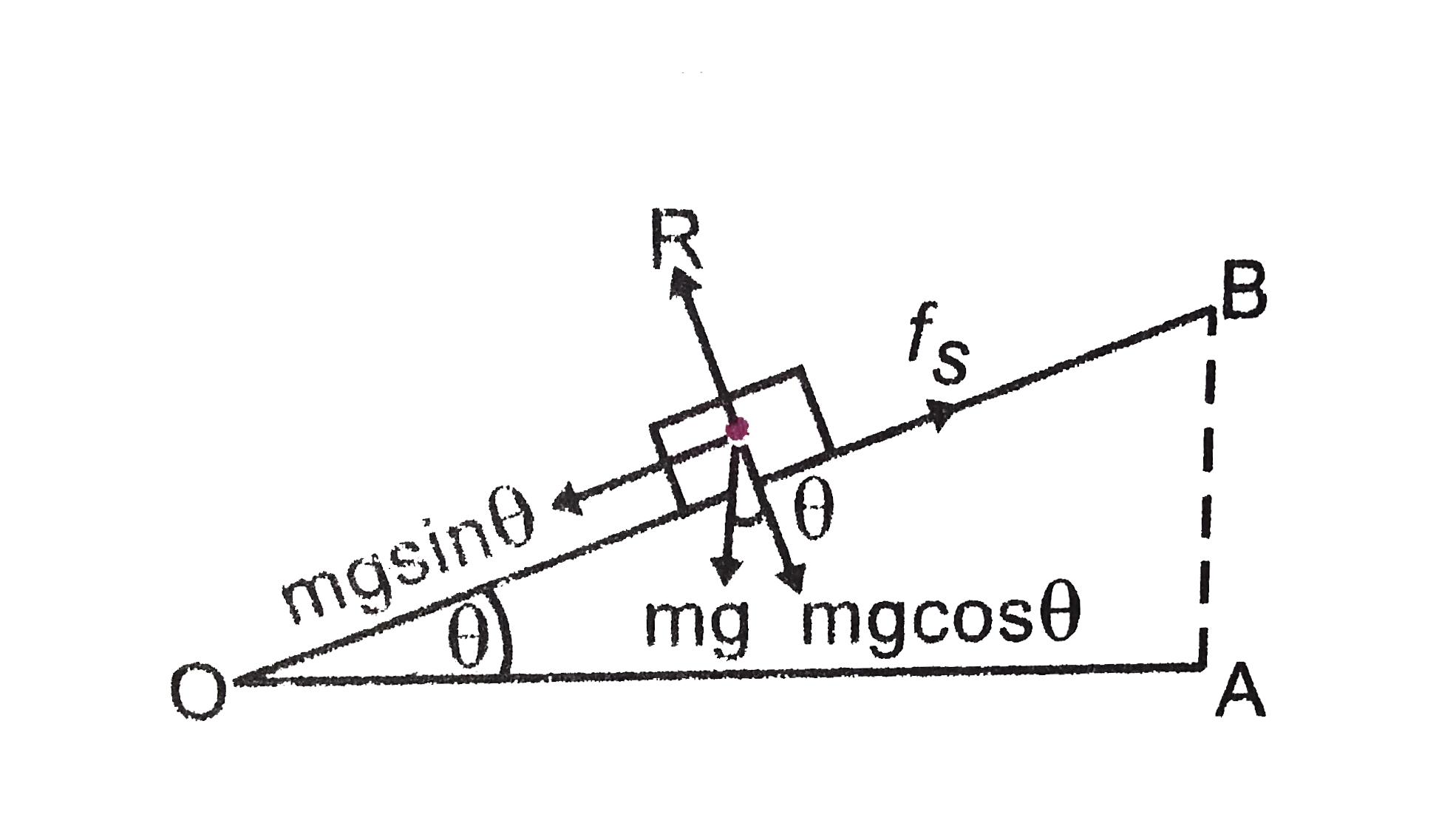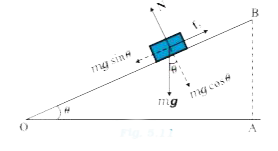A mass of 4kg rests on a horizontal plane the plane is gradually inclined unitl at an angle =15 with the horizontal the mass just begins to slide what is the coefficient of static friction bwtween the block and the surface Solution in Tamil
Here θ=15∘ is the angle of repose
μ=tanθ=tan15∘=0.27
Topper's Solved these Questions
- LAW OF MOTION BOOK - PREMIERS PUBLISHERSCHAPTER - LAW OF MOTION EXERCISE - OTHER IMPORTANT QUESTIONS & ANSWERS (V Conceptual Question )
16 Videos
- KINETIC THEORY OF GASESBOOK - PREMIERS PUBLISHERSCHAPTER - KINETIC THEORY OF GASESEXERCISE - OTHER IMPORTANT QUESTIONS & ANSWERS (VI. Conceptual Questions.)
8 Videos
- MOTION OF SYSTEM OF PARTICLES AND BODIESBOOK - PREMIERS PUBLISHERSCHAPTER - MOTION OF SYSTEM OF PARTICLES AND BODIESEXERCISE - OTHER IMPORTANT QUESTIONS & ANSWER (NUMERICAL PROBLEMS)
60 Videos
Similar Questions
Why is it necessary to bend kness while jumping from greater height
View SolutionWhen an automobile travels for a long distance , the air pressure in the tyres increases slightly . Why ?
View SolutionThe distance between the centres of carbon and oxyen atoms in the carbonmonoxid gas molecule is 1.13Å. Locate the centre of amss of the gas molecule relative to the carbon atom.
View SolutionA mass of 4 kg rest on a horizontal plane . The plane is gradually inclined until an angle 0=15∘ with the horizontal and the mass just begins to slide . What is the coefficient of static friction between the block and the surface ?

View SolutionA block of mass 5 kg rests on a inclined plane at an angle of 30^(@) with the horizontal. If the block just begins to slide, then what is the coefficient of static friction between the block and the surface?
View SolutionA block of mass 5 kg rests on a inclined plane at an angle of 30∘ with the horizontal. If the block just begins to slide, then what is the coefficient of static friction between the block and the surface?
View SolutionA block of mass 4kg rests on a rough horizontal plane. The plane is gradually inclined until at an angle θ=60∘ , with the vertical, the mass just begins to side. What is the coefficient of static friction between the block and the plane?
View SolutionA mass of 4kg rests on a horizontal plane the plane is gradually inclined unitl at an angle =15 with the horizontal the mass just begins to slide what is the coefficient of static friction bwtween the block and the surface
View SolutionSee Fig. A mass of 4 kg rests on a horizontal plane. The plane is gradually inclined until at an angle θ=15∘ with the horizontal, the mass just begins to slide. What is the coefficient of static friction between the block and the surface ?

View SolutionSee Fig. A mass of 4 kg rests on a horizontal plane. The plane is gradually inclined until at an angle θ=15∘ with the horizontal, the mass just begins to slide. What is the coefficient of static friction between the block and the surface ?

View SolutionSee Fig. A mass of 4 kg rests on a horizontal plane. The plane is gradually inclined until at an angle θ=15∘ with the horizontal, the mass just begins to slide. What is the coefficient of static friction between the block and the surface ?

View SolutionA mass of 4 kg rest on a horizontal plane . The plane is gradually inclined until an angle 0=15∘ with the horizontal and the mass just begins to slide . What is the coefficient of static friction between the block and the surface ?

View SolutionA mass of 4 kg rests on a horizontal plane. The plane is gradually inclined until at an angle 0=15∘ with the horizontal, the mass just begins to slide. What is the coefficient of static friction between the block and the surface
View SolutionA mass of 4 kg rests on a horizontal plane. The plane is gradually inclined until an angle θ=15∘ with the horizontal and the mass begins to slide. What is the coefficient of static friction between the block and the surface ?
View SolutionA block of mass 5 kg rests on a inclined plane at an angle of 30∘ with the horizontal. If the block just begins to slide, then what is the coefficient of static friction between the block and the surface?
View Solution
